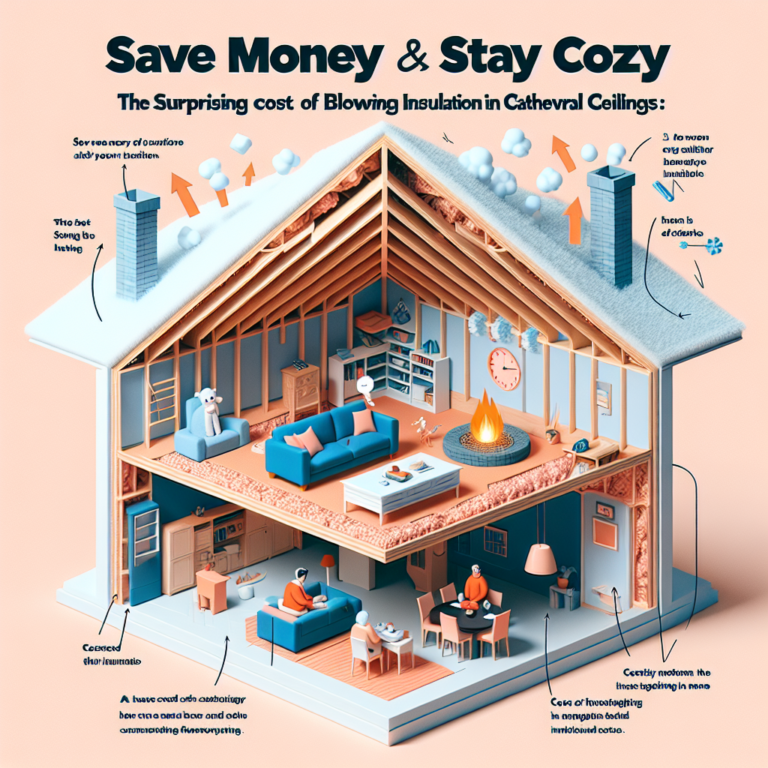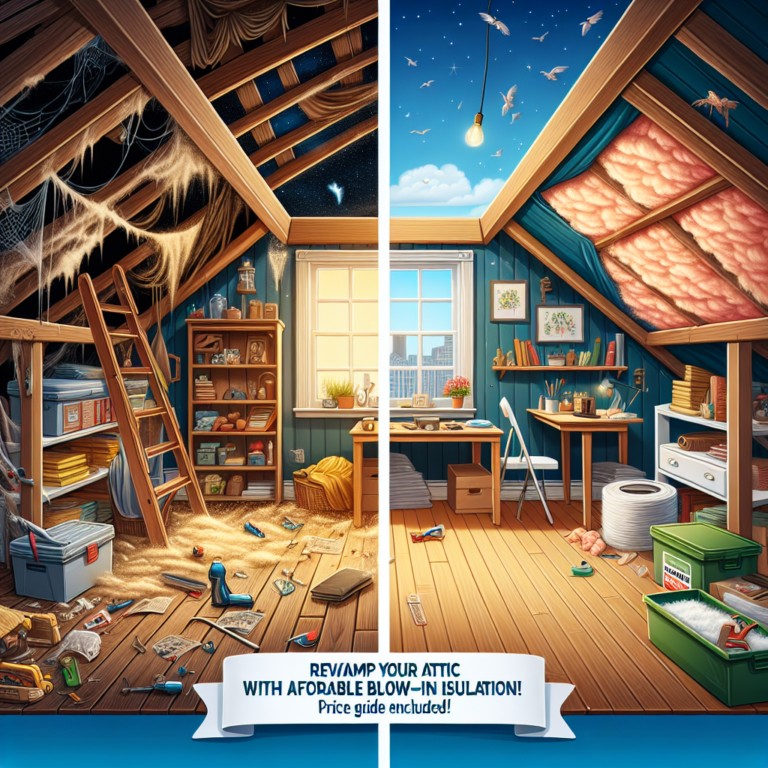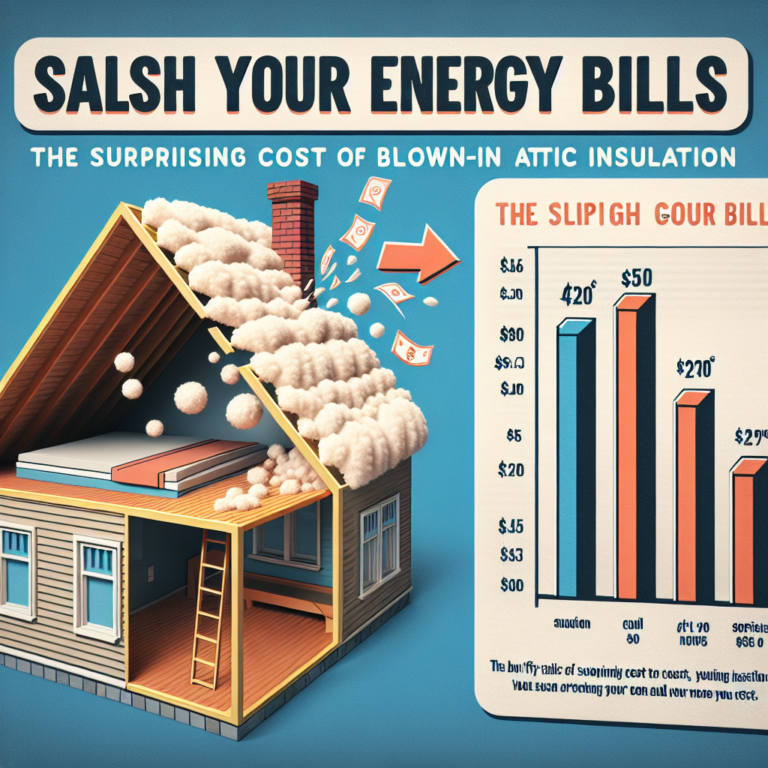-
Table of Contents
- Introduction
- 5 Signs Your Blown-In Insulation Needs to Be Replaced for a More Energy Efficient Home
- How to Tell When It’s Time to Replace Your Blown-In Insulation and Reduce Your Carbon Footprint
- Maximizing Energy Efficiency: When to Replace Your Blown-In Insulation for a Greener Home
- Q&A
- Conclusion
Upgrade your insulation, upgrade your comfort – signs it’s time to replace your blown-in insulation.
“Are you experiencing high energy bills, uneven temperatures, or drafts in your home? These are all signs that your blown-in insulation may need to be replaced. Don’t wait any longer, contact us at Texas Insulation Solution for a free consultation and upgrade your home’s insulation today. Visit texasinsulationsolution.com to learn more.”
Introduction
Blown-in insulation is a popular and effective way to insulate homes and buildings. However, like any other material, it can wear out over time and may need to be replaced. Knowing when it’s time to replace your blown-in insulation is important for maintaining the energy efficiency and comfort of your space. In this article, we will discuss some signs that indicate it’s time to replace your blown-in insulation. By being aware of these signs, you can ensure that your insulation is always performing at its best.
5 Signs Your Blown-In Insulation Needs to Be Replaced for a More Energy Efficient Home
Blown-in insulation is a popular choice for homeowners looking to improve the energy efficiency of their homes. It is a cost-effective and easy way to add insulation to walls, attics, and other areas of the house. However, like any other home improvement project, blown-in insulation needs to be maintained and replaced when necessary. In this article, we will discuss five signs that indicate it’s time to replace your blown-in insulation for a more energy-efficient home.
1. High Energy Bills
One of the most obvious signs that your blown-in insulation needs to be replaced is a sudden increase in your energy bills. If you notice a significant spike in your monthly energy costs, it could be a sign that your insulation is no longer doing its job effectively. Blown-in insulation can settle over time, leaving gaps and spaces that allow air to escape, making it harder for your HVAC system to maintain a comfortable temperature. This results in your heating and cooling systems working harder and using more energy, leading to higher energy bills.
2. Uneven Temperatures
Another sign that your blown-in insulation needs to be replaced is uneven temperatures throughout your home. If you notice that some rooms are significantly colder or warmer than others, it could be a sign that your insulation is no longer providing adequate coverage. This can be especially noticeable in rooms that are far from the thermostat or have large windows. Inadequate insulation can also lead to drafts and cold spots, making it uncomfortable to spend time in certain areas of your home.
3. Visible Damage
Blown-in insulation is typically made of materials such as cellulose, fiberglass, or mineral wool, which can break down over time. If you notice any visible damage to your insulation, such as mold, mildew, or water damage, it’s a clear sign that it needs to be replaced. These issues not only affect the effectiveness of your insulation but can also pose health risks to you and your family. It’s essential to address any visible damage to your insulation promptly to prevent further damage to your home.
4. Pests and Rodents
Unfortunately, blown-in insulation can also attract pests and rodents. If you notice an increase in pests or rodents in your home, it could be a sign that they have made a home in your insulation. These unwanted guests can damage your insulation, making it less effective and potentially causing other issues in your home. If you suspect that pests or rodents have made a home in your insulation, it’s crucial to have it replaced as soon as possible.
5. Age of Insulation
Lastly, the age of your blown-in insulation can also be a sign that it’s time for a replacement. While blown-in insulation can last for many years, it does have a lifespan. If your insulation is over 15-20 years old, it’s likely that it’s no longer providing adequate coverage and needs to be replaced. Additionally, if you have recently purchased an older home, it’s a good idea to have the insulation inspected and replaced if necessary.
In conclusion, blown-in insulation is an excellent way to improve the energy efficiency of your home. However, it’s essential to keep an eye out for these signs that indicate it’s time for a replacement. High energy bills, uneven temperatures, visible damage, pests and rodents, and the age of your insulation are all signs that it’s time to replace your blown-in insulation for a more energy-efficient home. By addressing these issues promptly, you can ensure that your home remains comfortable and energy-efficient for years to come.
How to Tell When It’s Time to Replace Your Blown-In Insulation and Reduce Your Carbon Footprint
Blown-in insulation is a popular choice for homeowners looking to improve the energy efficiency of their homes. Made from materials such as fiberglass, cellulose, or mineral wool, blown-in insulation is installed by blowing it into the walls, attic, or other spaces in a home. This method of insulation is known for its ability to fill in small gaps and crevices, providing a more complete coverage than traditional batt insulation. However, like any other home improvement, blown-in insulation has a lifespan and will eventually need to be replaced. In this article, we will discuss the signs that indicate it’s time to replace your blown-in insulation and how doing so can also help reduce your carbon footprint.
One of the first signs that it’s time to replace your blown-in insulation is a sudden increase in your energy bills. If you notice a significant spike in your heating or cooling costs, it could be a sign that your insulation is no longer doing its job effectively. Over time, blown-in insulation can settle and compress, reducing its ability to trap air and regulate the temperature in your home. This can result in your HVAC system working harder to maintain a comfortable temperature, leading to higher energy bills.
Another sign that your blown-in insulation needs to be replaced is the presence of pests or rodents in your home. Blown-in insulation can provide a cozy nesting place for pests, especially if it has settled and created gaps or holes. If you notice an increase in pest activity in your home, it’s a good idea to have your insulation inspected. Not only can pests cause damage to your insulation, but they can also pose health risks to you and your family.
In addition to these signs, the age of your blown-in insulation is also a factor to consider. Most blown-in insulation has a lifespan of 20-30 years, depending on the material used. If your insulation is approaching or has exceeded this timeframe, it’s a good idea to have it replaced. Not only will this ensure that your home is properly insulated, but it can also help reduce your carbon footprint.
Replacing your blown-in insulation can have a significant impact on your carbon footprint. As mentioned earlier, blown-in insulation helps regulate the temperature in your home, reducing the need for excessive heating or cooling. This, in turn, reduces the amount of energy your home consumes, resulting in a lower carbon footprint. Additionally, replacing old insulation with newer, more energy-efficient materials can further reduce your carbon footprint.
Furthermore, replacing your blown-in insulation can also improve the air quality in your home. Over time, insulation can become a breeding ground for mold, mildew, and other allergens. These can be harmful to your health, especially for those with respiratory issues. By replacing your insulation, you can eliminate these potential health hazards and improve the overall air quality in your home.
In conclusion, blown-in insulation is a great way to improve the energy efficiency of your home. However, like any other home improvement, it has a lifespan and will eventually need to be replaced. Signs such as increased energy bills, pest activity, and the age of your insulation are all indicators that it’s time for a replacement. Not only will replacing your blown-in insulation ensure that your home is properly insulated, but it can also help reduce your carbon footprint and improve the air quality in your home. So, if you notice any of these signs, it’s time to consider replacing your blown-in insulation.
Maximizing Energy Efficiency: When to Replace Your Blown-In Insulation for a Greener Home
Blown-in insulation is a popular choice for homeowners looking to increase energy efficiency in their homes. It is a cost-effective and efficient way to keep your home warm in the winter and cool in the summer. However, like any other home improvement, blown-in insulation has a lifespan and will eventually need to be replaced. In this article, we will discuss the signs that indicate it’s time to replace your blown-in insulation for a greener home.
One of the first signs that it’s time to replace your blown-in insulation is a sudden increase in your energy bills. If you notice a significant spike in your energy costs, it could be a sign that your insulation is no longer doing its job effectively. Blown-in insulation can settle over time, leaving gaps and spaces that allow air to escape, making it harder for your HVAC system to maintain a comfortable temperature. This can result in your heating and cooling systems working harder and using more energy, leading to higher energy bills.
Another sign that your blown-in insulation needs to be replaced is the presence of pests in your home. Over time, blown-in insulation can become a breeding ground for pests such as rodents, insects, and even mold. These pests can damage your insulation, making it less effective and potentially causing health hazards for you and your family. If you notice an increase in pests in your home, it’s essential to have your insulation inspected and replaced if necessary.
A noticeable change in the temperature of your home is also a sign that it’s time to replace your blown-in insulation. If you find yourself constantly adjusting your thermostat to maintain a comfortable temperature, it could be a sign that your insulation is no longer working efficiently. As mentioned earlier, blown-in insulation can settle over time, leaving gaps and spaces that allow air to escape. This can result in uneven temperatures throughout your home, making some rooms too hot or too cold. Replacing your insulation can help create a more consistent and comfortable temperature throughout your home.
Another sign that your blown-in insulation needs to be replaced is the presence of moisture or water damage. Blown-in insulation can absorb moisture, which can lead to mold growth and damage to your walls and ceilings. If you notice any water stains or discoloration on your walls or ceilings, it’s essential to have your insulation inspected and replaced if necessary. This will not only improve the energy efficiency of your home but also prevent potential health hazards caused by mold.
Lastly, if your blown-in insulation is more than 15-20 years old, it’s time to consider replacing it. While blown-in insulation can last for many years, it will eventually lose its effectiveness and need to be replaced. As insulation technology advances, newer materials are more efficient and can provide better insulation for your home. Replacing your old insulation with newer, more efficient materials can significantly improve the energy efficiency of your home and save you money on energy bills in the long run.
In conclusion, blown-in insulation is an excellent way to increase energy efficiency in your home. However, it’s essential to keep an eye out for signs that indicate it’s time to replace your insulation. Sudden increases in energy bills, the presence of pests, changes in temperature, moisture or water damage, and old age are all signs that your blown-in insulation needs to be replaced. By replacing your insulation, you can ensure that your home remains energy-efficient and comfortable for years to come.
Q&A
1. What are some signs that it’s time to replace blown-in insulation?
Some signs that it’s time to replace blown-in insulation include uneven temperatures in your home, increased energy bills, and visible damage or settling of the insulation.
2. How can uneven temperatures in my home be a sign of needing new blown-in insulation?
Uneven temperatures in your home can be a sign of needing new blown-in insulation because it indicates that the insulation is not effectively regulating the temperature throughout your home. This could be due to gaps or thinning areas in the insulation, which can occur over time as the insulation settles or becomes damaged.
3. Can increased energy bills be a result of needing new blown-in insulation?
Yes, increased energy bills can be a result of needing new blown-in insulation. If your insulation is not functioning properly, it can lead to air leaks and loss of heat or cool air, causing your HVAC system to work harder and use more energy to maintain a comfortable temperature. This can result in higher energy bills. Replacing your blown-in insulation can help improve energy efficiency and lower your bills.
Conclusion
In conclusion, there are several signs that indicate it may be time to replace your blown-in insulation. These include high energy bills, uneven temperatures throughout your home, and visible signs of damage or wear on the insulation. It’s important to regularly inspect and maintain your insulation to ensure it is functioning properly and effectively. If you notice any of these signs, it may be time to consider replacing your blown-in insulation to improve energy efficiency and maintain a comfortable living environment.






